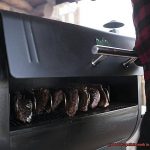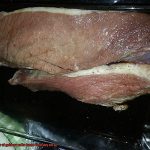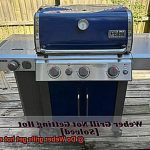Are you a grill enthusiast in search of the ultimate searing experience? Do you own a Blackstone griddle and wonder if oiling it before cooking is necessary? If so, then this post is just what you need.
Cooking on a griddle can be an enjoyable and unique experience, especially with the powerful Blackstone griddles. These machines are perfect for refining your culinary skills and making your favorite dishes with ease. But the question lingers: should you oil Blackstone griddles before cooking?
In this post, we’ll shed some light on this topic and explore the benefits of oiling your griddle before cooking. We’ll delve into various types of oils that work best, how to apply them, and some helpful tips to keep your griddle in top shape.
Oiling your Blackstone griddle before cooking is essential to achieving the perfect sear on your favorite foods. It prevents food from sticking to the surface while also ensuring that heat is evenly distributed throughout every corner of the griddle. So sit back, grab a cup of coffee, and let’s dive into the world of Blackstone griddles and why it’s crucial to oil them before cooking.
Contents
What Is A Blackstone Griddle?
The Blackstone Griddle features a flat griddle surface made of cold-rolled steel, designed specifically for propane gas use. Whether you’re cooking up some juicy meats, crispy vegetables, or fluffy pancakes, this griddle has got you covered.
One of the most appealing features of the Blackstone Griddle is its range of sizes. With models ranging from 17 inches to 36 inches, you can choose a size that suits your cooking needs. Whether you’re feeding a small family or hosting a large gathering, this griddle can handle it all.
What makes the Blackstone Griddle stand out from other outdoor cooking appliances is its cold-rolled steel surface. This material is known for its excellent heat retention and distribution, ensuring that your food cooks evenly and quickly without any hot spots or uneven cooking.
But before you start cooking on your Blackstone Griddle, there’s one crucial step you should take: oiling the surface. Oiling helps prevent food from sticking to the surface, ensuring that your meals come out perfectly cooked every time. It also helps distribute heat evenly across the griddle surface, guaranteeing your food cooks evenly.
To oil your Blackstone Griddle before cooking, preheat it for at least 10-15 minutes. Use any type of oil you prefer, such as vegetable oil or canola oil, and apply a thin layer of oil to the surface using a brush or paper towel. Be careful not to use too much oil to avoid flare-ups and smoke.
If you’re cooking with acidic ingredients like citrus fruits or tomatoes, it’s best to use a high smoke point oil like avocado oil. This prevents the acidic ingredients from reacting with the metal surface of the griddle.
The Blackstone Griddle is also incredibly portable, with models featuring wheels and handles to move around your backyard or take with you on camping trips. With this appliance, you can enjoy delicious outdoor meals anywhere, anytime.
Why Should You Oil A Blackstone Griddle Before Cooking?
If so, you know that oiling the cooking surface is an essential step that should never be overlooked. This is especially crucial when using a Blackstone griddle, renowned for its impressive size, versatility, and efficiency. But why should you oil a Blackstone griddle before cooking? Let’s explore the reasons why.
Firstly, oiling the surface of the Blackstone griddle helps to prevent food from sticking. Imagine trying to flip your delicate eggs or pancakes only to have them stick to the surface. By adding a thin layer of oil before cooking, your food will glide effortlessly around the griddle and come off without leaving any residue behind.
Moreover, oiling the griddle creates a non-stick surface over time by seasoning it. The more you use and oil a Blackstone griddle, the better seasoned it becomes. The natural polymers in the oil create a non-stick coating, making future cooking sessions easier and less messy.
In addition to preventing food from sticking and creating a non-stick surface, oiling the Blackstone griddle before cooking also helps to evenly distribute heat across its surface. Adding oil fills in any small gaps or imperfections in the surface, creating a more consistent cooking experience. This ensures that your food cooks evenly, resulting in better texture and taste.
Last but not least, oiling your Blackstone griddle before cooking can help extend its lifespan. With proper maintenance and care, your griddle can last for years. By preventing food from sticking and creating a non-stick surface, there will be less wear and tear on the griddle over time. This means that it will last longer and require less maintenance overall.
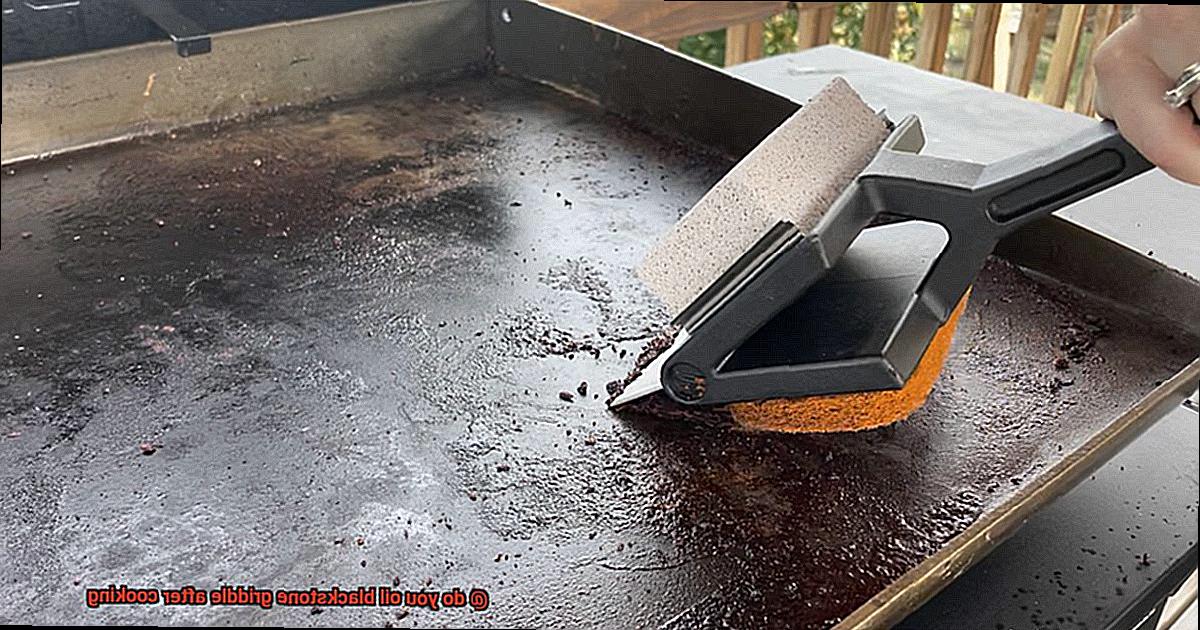
What Type of Oil Should You Use?
As you know, oiling your griddle is a crucial step in achieving the perfect sear and preventing food from sticking. But have you ever stopped to wonder which type of oil is best suited for high-heat cooking on a Blackstone griddle? Wonder no more, because we’ve got you covered with some expert advice.
Let’s start with vegetable oil. It’s a popular choice for griddle cooking thanks to its neutral flavor and high smoke point. However, some people are concerned about its high levels of omega-6 fatty acids, which can be pro-inflammatory in large amounts. If you’re looking for a healthier option, consider canola oil.
Canola oil also has a neutral flavor and high smoke point, but the real benefit is that it’s lower in saturated fats and higher in omega-3 fatty acids compared to vegetable oil. And if you’re looking for an even healthier choice, grapeseed oil is worth considering.
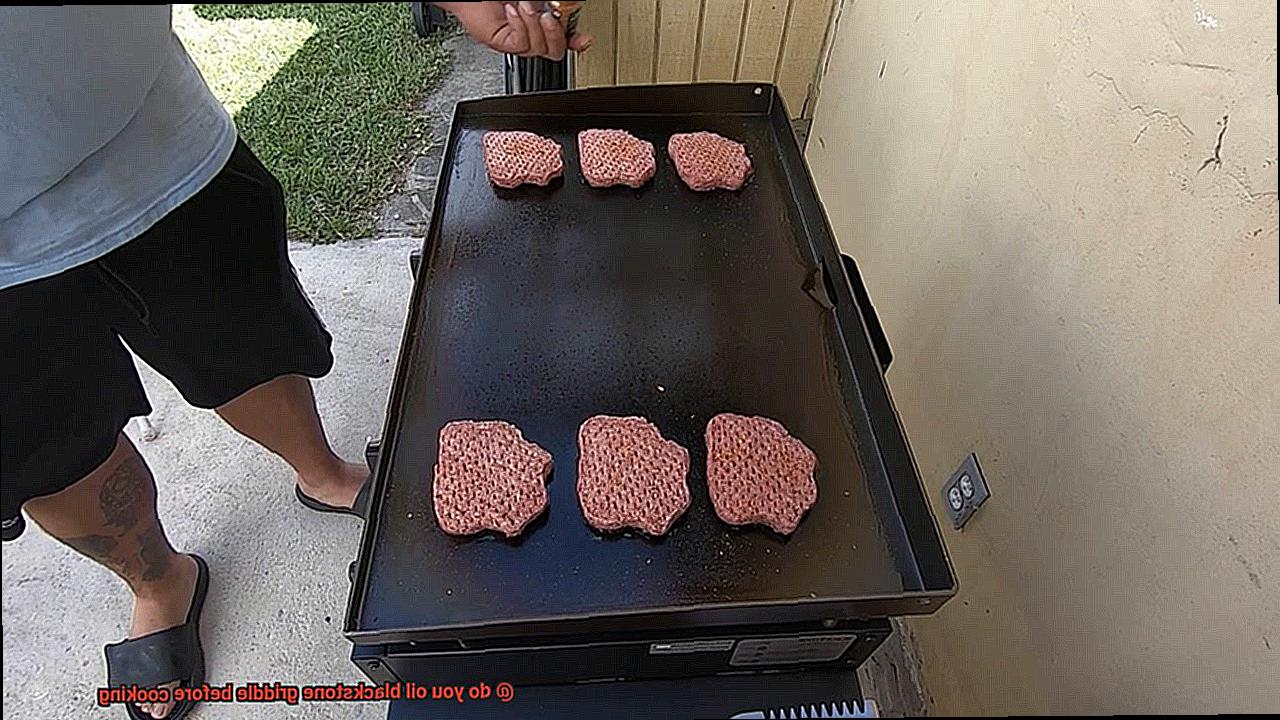
Grapeseed oil has a very high smoke point and is virtually flavorless – perfect for high-heat cooking. Plus, it’s packed with antioxidants and healthy fats that can help lower cholesterol levels. So if health is your top priority, give grapeseed oil a try.
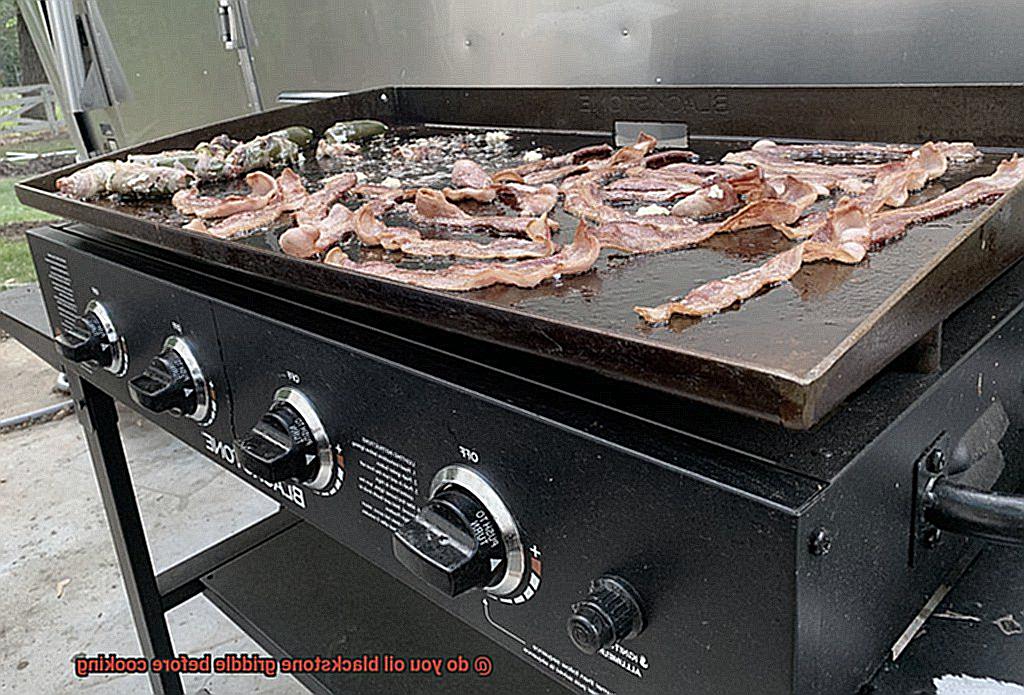
But don’t just take our word for it – experiment with different oils to find the one that works best for your favorite dishes and dietary needs. And remember to give your Blackstone griddle some TLC before each cooking session – your taste buds will thank you.
Preheating The Griddle Before Applying Oil
Then listen up, because preheating your Blackstone griddle before applying oil is a crucial step that should never be overlooked. As an expert in all things griddle cooking, I can tell you that this simple step can make all the difference in achieving the perfect sear and preventing food from sticking.
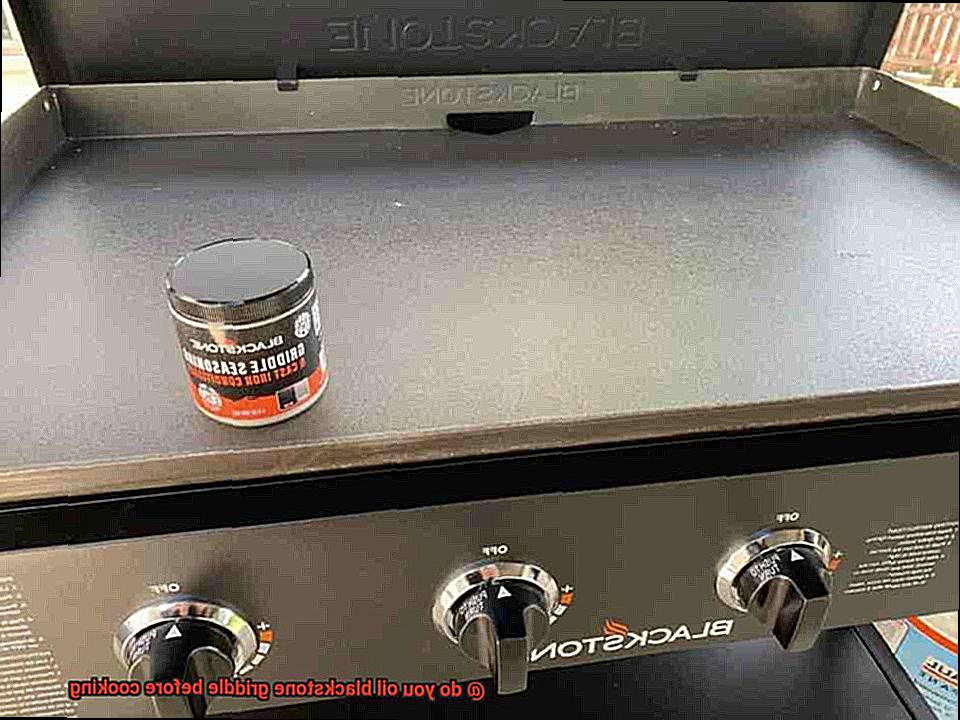
Preheating your griddle surface is essential for even cooking. If your griddle surface isn’t hot enough when you add your food, you run the risk of uneven cooking and less-than-perfect results. Additionally, preheating helps to evaporate any residual moisture or debris on the surface, which can cause sticking if left untreated.
To get started, turn on your heat source and set the temperature to medium-high or high heat. Allow your Blackstone griddle to heat up for at least 10-15 minutes to ensure it’s hot enough for cooking. Always refer to your recipe for specific cooking temperatures, as different dishes may require different heat levels.
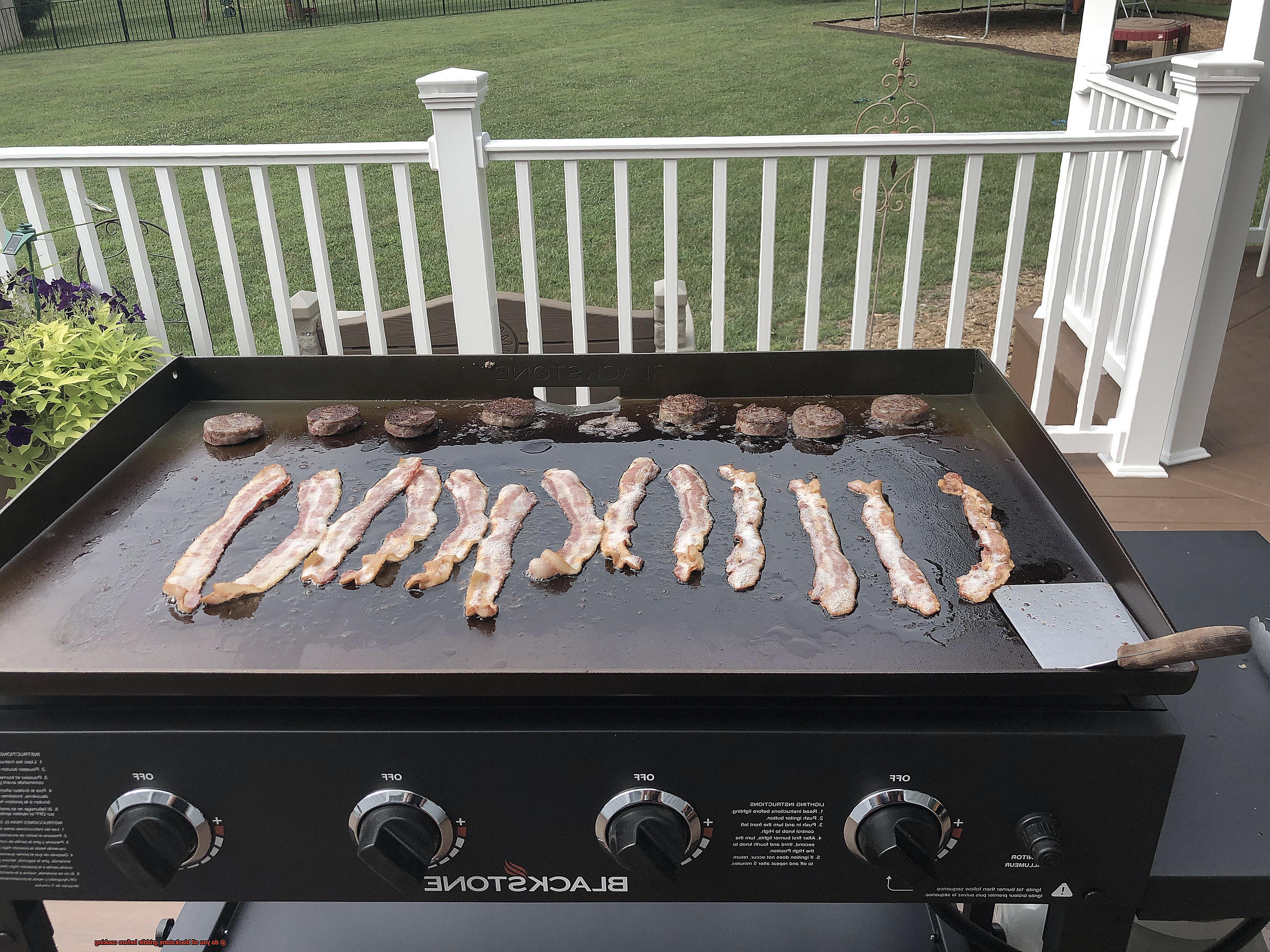
Once your griddle is hot, it’s time to apply oil. Choosing an oil with a high smoke point, such as vegetable oil or canola oil, is crucial. Spread a thin layer of oil over the entire surface using a paper towel or brush, making sure to coat the corners and edges of the griddle as well. Alternatively, you can use a spray bottle filled with oil for easier application.
Let the oil heat up for another 5-10 minutes before adding any food. This allows it to evenly distribute and create a non-stick surface for your food to cook on. It’s important to monitor the temperature throughout the cooking process and adjust as needed.
How Much Oil Should You Use?
Fear not, because I have all the juicy details you need to know to cook up a storm without any sticky situations.
The amount of oil you use depends on what you’re cooking and how much of it you’re making. For small batches of eggs or bacon, a tablespoon or two should suffice. However, if you’re preparing a big breakfast feast, you may need several tablespoons.
It’s essential to note that too much oil can make your food greasy and increase the risk of flare-ups and smoke on your griddle. So, start with small amounts of oil and add more as needed. This way, you can avoid using too much oil and ensure that your food doesn’t stick.
But that’s not all. The type of oil you choose is just as important. Some oils can handle high temperatures without burning or smoking, known as high smoke points. Opt for oils like vegetable oil, canola oil, or avocado oil for best results. Avoid using low smoke point oils like olive oil or butter.
To summarize, here are some tips for using the right amount of oil when cooking on a Blackstone griddle:
- Start with small amounts of oil and add more as needed.
- Choose an oil with a high smoke point to avoid unwanted smoke or burned food.
- Avoid using too much oil to prevent greasy and soggy food.
Acidic Ingredients and High Smoke Point Oils
Cooking on a Blackstone griddle is an experience that can elevate your culinary skills to new heights. However, using the wrong oils and acidic ingredients can turn your cooking into a disaster. As a seasoned expert in this field, I have researched and compiled essential tips to help you choose the right oil and use it correctly when cooking with acidic ingredients.
To begin with, let’s talk about smoke point. It’s the temperature at which oil begins to break down and smoke, resulting in an unpleasant taste and potentially harmful compounds. Since a Blackstone griddle requires high heat, you need to choose an oil with a high smoke point. Refined coconut oil, avocado oil, and grapeseed oil are excellent choices that can withstand high temperatures without breaking down or smoking.
However, if you plan to cook with acidic ingredients like lemon juice or vinegar, these can lower the smoke point of your oil. In such cases, you may want to opt for even higher smoke point oils like peanut or safflower oil or use neutral oils such as vegetable or canola oil.
Preheating your griddle is crucial before adding any oil. This ensures that your food cooks evenly and doesn’t stick to the surface. When adding oil, use just enough to coat the surface lightly. Don’t add too much as it can cause excess smoke and flare-ups.
Here are some additional tips to keep in mind:
- Keep your oils fresh – rancid oils can ruin your food’s flavor.
- Don’t mix oils unless you’re sure they have similar smoke points.
- Choose oils with healthy fats like omega-3 fatty acids.
- Avoid using butter or margarine as they burn easily on high heat.
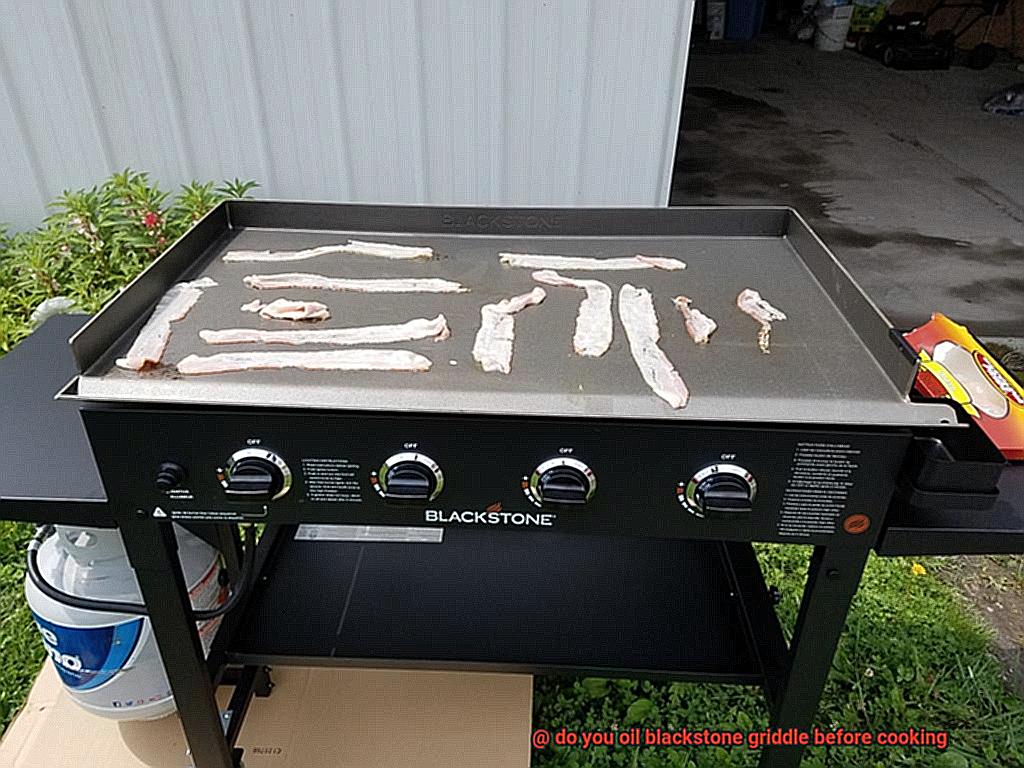
In summary, when cooking on a Blackstone griddle using oils and acidic ingredients, you need to consider the smoke point of your oils and how they interact with acidic ingredients. By using high smoke point oils, preheating your griddle, and adding just enough oil to coat the surface, you’ll be able to cook delicious meals without any unwanted smoking or burning.
Cleaning Up After Cooking On a Blackstone Griddle
Cooking on a Blackstone griddle is an extraordinary experience, but cleaning up after can be a daunting task. Neglecting this step can lead to a buildup of residue that can cause damage and rust. Don’t worry though. As an expert in the field, I have compiled essential tips to make cleaning your Blackstone griddle a breeze.
Firstly, wait for the griddle to cool down completely before you begin cleaning it. Trying to clean a hot griddle can lead to serious burns or damage to the cooking surface. Once it has cooled down, gently scrape off any food debris or excess oil using a scraper or spatula.
Next, wipe down the surface of the griddle with a paper towel or cloth. If there are still stubborn bits of food left on the griddle, use vinegar mixed with water to loosen it up. Pour the mixture onto the griddle and let it sit for a few minutes before wiping it away with a paper towel or cloth. This will ensure that every last bit of food is removed from the surface.
After you have wiped down the surface of the griddle, it’s time to oil it. Oiling your Blackstone griddle is essential in preventing rust and maintaining its longevity. You can choose to oil your Blackstone griddle before each use or after cleaning it. To oil your Blackstone griddle, use a high smoke point oil such as vegetable oil or canola oil. Pour a small amount of oil onto the surface and use a cloth to spread it evenly across the entire cooking surface. This will also ensure that your food doesn’t stick to the surface during cooking.
Once you have oiled your griddle, cover it with a protective cover to prevent dust and debris from settling on it. If you don’t have a cover, you can also use a sheet of aluminum foil or parchment paper. This will also protect your griddle against any scratches or damages.
VspmDVnj2pI” >
Conclusion
In conclusion, cooking on a Blackstone griddle is an exceptional experience that requires a little preparation to achieve the perfect sear and prevent food from sticking. The essential step is to oil the surface before cooking, which helps distribute heat evenly across the griddle surface, ensuring that your food cooks evenly without any hot spots or uneven cooking.
To oil your Blackstone griddle like a pro, preheat it for at least 10-15 minutes and use any type of oil you prefer. Whether you choose vegetable oil, canola oil, or grapeseed oil, these oils are excellent choices that can withstand high temperatures without breaking down or smoking. It is also crucial to select an oil with a high smoke point when cooking with acidic ingredients like lemon juice or vinegar.
After sizzling up some scrumptious meals on your Blackstone griddle, wait for it to cool down completely before cleaning it. Use a scraper or spatula to remove any food debris or excess oil before wiping down the surface with a paper towel or cloth. Remember always to keep your Blackstone griddle well-oiled after cleaning it to maintain its longevity.
In summary, by following these simple tips and tricks for using and maintaining your Blackstone griddle, you can enjoy delicious outdoor meals anywhere and anytime. So why not fire up your grill today and get ready for some mouth-watering delights?


